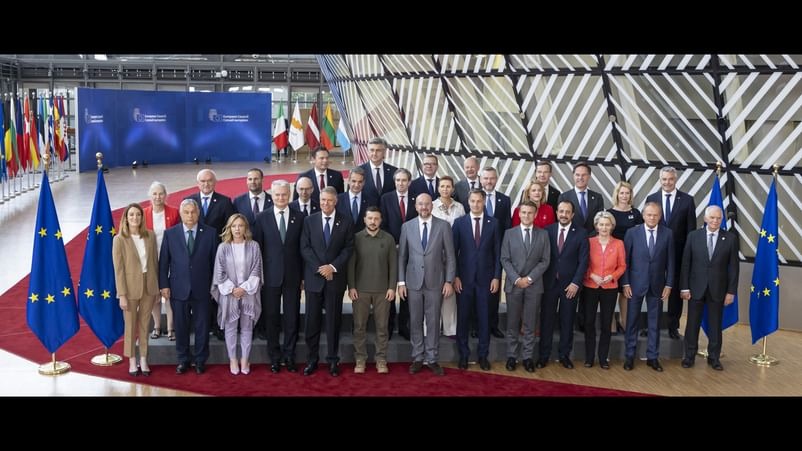
As Ukraine marked the third anniversary of the Russia-Ukraine war, it hosted a high-profile summit attended by European leaders, reaffirming their support for Ukraine. However, notably absent from the gathering were US officials, signaling a significant shift in Washington’s approach under President Donald Trump. While the US has voiced support for ending the war, its evolving stance appears to be prioritizing Russian interests over continued backing for Ukraine.
Europe Rallies Behind Ukraine Amid US Absence
The Ukraine summit, held on Monday, saw participation from key European figures, including:
European Commission President Ursula von der Leyen
European Council President Antonio Costa
Leaders of Canada, Denmark, Iceland, Latvia, Lithuania, Finland, Norway, Spain, and Sweden
Additionally, leaders from Britain, Germany, Japan, Poland, Turkey, and other nations joined via video link.
Von der Leyen emphasized the broader implications of the war, stating:
“In this fight for survival, it is not only the destiny of Ukraine that is at stake. It’s Europe’s destiny.”
European leaders at the summit called for increased military support to counter Russia, stressing that the US’s pivot away from Ukraine demands urgent action from Europe.
Danish Prime Minister Mette Frederiksen warned:
“We have to scale up as Europeans, we have to speed up. My guess is that we have a couple of months to take all necessary decisions. Otherwise, we’ll be too late.”
Meanwhile, Ukrainian President Volodymyr Zelensky made it clear that peace would not come from Russian goodwill:
“This year should be the year of the beginning of a real, lasting peace. Putin will not gift us this peace, nor will he give it to us in exchange for anything. We have to win peace with strength, wisdom, and unity.”
Trump’s Stance: A Major Shift in US Policy?
While European leaders were gathered in Ukraine, US President Donald Trump met with French President Emmanuel Macron. During a joint press conference, Trump signaled frustration over America’s financial burden in the war:
“The United States has put up far more aid for Ukraine than any other nation. We’ve spent more than $300 billion, while Europe has spent about $100 billion. That’s a big difference, and at some point, we should equalize.”
These comments raise concerns for both Ukraine and its European allies, as they suggest the US may further reduce or withdraw its support, shifting the burden of Ukraine’s defense entirely onto Europe.
What Happens Next? Europe’s Dilemma
While the US has confirmed it will not send troops to Ukraine, European nations now face an urgent challenge:
Military aid: If the US withdraws financial and military support, European nations must compensate for the shortfall.
Defense mobilization: Many European countries have not significantly increased their military production, leaving them behind Russia’s war economy.
NATO’s role: NATO Secretary General Jens Stoltenberg admitted that NATO has not fully delivered on its promises to Ukraine, further weakening Kyiv’s position.
Zelensky previously warned in a January 2024 interview:
“Europe cannot support Ukraine alone without the US.”
His concerns now seem more relevant than ever, as European defense production still lags behind Russia’s, making a future without US support a daunting challenge.
The Road Ahead: What Europe Must Do
If US support declines, European nations must:
Increase long-term defense budgets to sustain Ukraine’s war effort.
Strengthen intelligence, reconnaissance, and surveillance capabilities to compensate for US expertise.
Expand military production to counter Russia’s growing war economy.
Continue diplomatic efforts to keep the US engaged in supporting Ukraine.
With or without America’s backing, Europe will bear the consequences of Putin’s ambitions. To deter future conflicts and avoid a larger crisis, European leaders must act decisively now—before it’s too late.

 Share
Share
_458360041_124x80.jpg)


